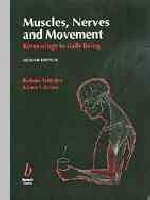
Muscles, Nerves and Movement
Blackwell Science Ltd (Verlag)
978-0-632-04096-4 (ISBN)
- Titel ist leider vergriffen;
keine Neuauflage - Artikel merken
The Agreement for Minor Building Works (MW 80) is the most widely used of the JCT forms of contract. This book explains the practical applications of the form from the point of view of both the employer and his architect, and of the contractor. It explains the legal concepts in simple terms, supported by flowcharts, tables and sample letters. The new edition takes account of revisions to the contract since the book was last published in 1990, including changes introduced by the Construction Act, and recent court decisions.
Section 1: Introduction to Movement; Chapter 1 Functional Units - Components of the Musculoskeletal and Nervous Systems:; The cell and basic tissues; Connective tissues in the musculoskeletal system; Articulations; Skeletal muscle; Nervous tissue; The myotatic unit (stretch reflex); Chapter 2 Movement Terminology and Biomechanical Principles:; The anatomical position; Planes and axes of movement; Movements at synovial joints; Muscle attachments and group action; Types of muscle action (known as muscle work); Biomechanical principles; Chapter 3 Control Systems - The Brain and Spinal Cord:; Position and relations of the main brain areas; Cerebrospinal fluid; Organization of grey and white matter; Cerebral hemispheres; Basal ganglia; Thalamus; Internal capsule; Hypothalmus and limbic systems; Brain stem; Cerebellum; Summary of brain areas - function in movement; The position and segmentation of the spinal cord; Spinal meninges; Organization of grey and white matter; Chapter 4 Link Systems - Peripheral Nervous System:; The position and location of the cranial and spinal nerves; Spinal nerves; Peripheral nerves: composition and distribution; Cranial nerves; Autonomic nervous system; Sympathetic and parasympathetic systems; Section 2 The Anatomy of Movement: Organisation and Cooperation in Daily Living; Chapter 5 Positioning Movements - The Shoulder and Elbow:; Functional movements of the shoulder; The petoral girdle; The glenohumeral joint and the muscles stabilising it; Muscles acting on the glenhumerial joint; Muscles moving the pectoral girdle; Summary of the muscles involved in shoulder movement; Functional movements of the elbow - the elbow joint; Muscles moving the elbow joint; Positioning movements; Chapter 6 Manipulative Movements: The Forearm, Wrist and Hand:; Functions of the hand; Pronation and supination of the forearm in hand function; Movements of the wrist; Movements of the hand; Types of grip; Summary of the muscles of the forearm and the intrinsic muscles of the hand; Chapter 7 The Nerves of the Upper Limb:; Introduction; The brachial plexus; Terminal branches of the brachial plexus; Outline of the direct branches from the brachial plexus; Chapter 8 Support and Propulsion - The Lower Limb:; Functions of the lower limb; Movement sof the lower limb; Support; Swing; Propulsion; The foot; Summary of the lower limb muscles; Chapter 9 The Nerves of the Lower Limb and Some Observations of Gait:; Introduction; the lumbar plexus - position and formation; Terminal branches of the lumbar plexus; The sacral plexus - position and formation; Terminal branches of the sacral plexus; Some observations of gait; Chapter 10 Posture and Breathing - The Trunk:; Functions of the trunk; Upright posture; Movements of the trunk; Movements of the thorax and abdomen in breathing; Movements of the pelvis; Nerve supply of the muscles of the trunk; Summary of the muscles of the trunk; Section 3 Integration of Movement: Sensation, Action and Performance; Chapter 11 Sensory Background to Movement:; Sensory subsystems in movement; Input from the skin, joints and muscles; Input from the position of the head (vestibular system); Input from the eyes; Chapter 12 Motor Control:; Lower motor neurones - motor activity at the spinal level; Upper motor neurons - brain stem and cortical levels; Basal ganglia and cerebellum; Summary of the three levels of motor control; Chapter 13 Integration and Performance:; Integration in neurone pools; Spinal integration; Integration in the brain stem; Performance; Behavioural aspects of movement; Summary of the basic components in movement performance; Further Reading; Appendices
| Erscheint lt. Verlag | 8.7.1996 |
|---|---|
| Zusatzinfo | 142 |
| Verlagsort | Oxford |
| Sprache | englisch |
| Maße | 172 x 244 mm |
| Gewicht | 773 g |
| Themenwelt | Medizin / Pharmazie ► Medizinische Fachgebiete ► Sportmedizin |
| Studium ► 1. Studienabschnitt (Vorklinik) ► Physiologie | |
| ISBN-10 | 0-632-04096-3 / 0632040963 |
| ISBN-13 | 978-0-632-04096-4 / 9780632040964 |
| Zustand | Neuware |
| Informationen gemäß Produktsicherheitsverordnung (GPSR) | |
| Haben Sie eine Frage zum Produkt? |
aus dem Bereich


